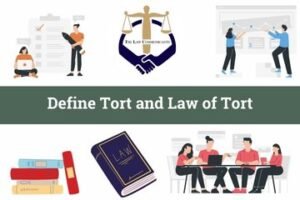Managing and Identifying the Trade Secret as a Guide for Business
Written by: Ms Mokshada Aggarwal
It is necessary to first understand in order for an organization to protect its trade secrets, what that information or knowledge is, again how it participates in the valuation of the goods, services or services of the company and what the consequences of its exposure, misappropriation are. Initially the greater the responsibility lies with the commercial sector or role which discovers such knowledge of resources. Any sensitive professional information which offers a competitive advantage should be identified, at least by definition, and then subject to security measures proportional to its perceived significance and risk.
What amounts the identification of trade secret in general terms
What counts as a trade secret is a significant first step in the gross management of the valuable knowledge wealth of a corporation, whether they develop into patent applications are kept for internal protection, are used or are sold by a collaboration firm or licensing authority. Using such information laid, a policy and management system can be built, usually, we would assume it would be a disciplinary mechanism involving managers from the various business units and a few functional and non-functional areas such as legal or human resources, IT and supply chain etc. Unlike other forms of intellectual property, trade secrets are not recorded in a Government filing or listed elsewhere. They merely demonstrated the importance of information which a businessman has kept the secret, but which can be shared in active confidence in a confidential relationship with employees or with third parties and with the assurance that it will not be released.
General Legal Requirement
In practice, undertakings having to provide a common understanding/advantages of the kinds of information/knowledge they possess, which may be the subject of disclosure protection. Where the information is exchanged, it is also important to notify unique information which is considered confidential. For certain trade secrets, they are first listed in order to understand in the context of the contested cases.
Following guiding, principles can help figure out whether any given collection of information and expertise should or may not qualify for security.
- The value of the information or knowledge as calculated by the relative benefits it provides or by the damage caused by the disclosure or misuse or misappropriation thereof.
- Information derived from different individual competences or expertise, none of which is covered as an important matter of public policy.
- To the degree to which the knowledge is secure from unauthorized access or misuse by both insiders and third parties;
- The time, energy and resources that the organization or organizations are spending on generating or creating some knowledge; and
- The importance to the other person’s ability to discover, replicate or obtain information independently.
This is important that the holder or genuine owner of a trade secret conduct the identification and determination of information as set out above in the first instance. What knowledge is considered to be a trade secret or not, may eventually, be determined on a case-by-case basis by the courts of law and depends on facts and circumstances such as the above factors. A clear definition of trade secrets is not in favour of strict laws, partially because only the owner of trade secrets can assess the importance and the relative risks to trade secrecy, hence it is important to set goals and follow risk reduction techniques.
Specific legal requirements:
Commercial value
Under current U.S. and European Union laws, a trade secret, knowledge must have some commercial or economic value; it can be either real or possible. Potential the value may exist even if the information has not led to an economic product, good, or service, even if the information includes failed experiments or other evil knowledge, usually derived from analyzes, that can help lead the way to success.
As mentioned above, interest can be measured in the magnitude of the competitive advantage given by the knowledge or the harm that would result from inappropriate collection, use or disclosure of the information.
The value of information is often very difficult to measure and can continuously alter, so no minimum threshold value is set. In practical terms, any perceived advantage is likely to apply. This is worth noting that trade secrets should not be of an exclusive nature: while the information or knowledge may be recognized and utilized by certain businesses or organizations as long as it is not revealed to others, there may be value in the fact that a company’s competitors do not know it holds the information.
Reasonable steps towards preserving for secrecy
The TRIPS clearly provides as a third condition for non-disclosed information that it is subject to appropriate measures to keep it secret under the circumstances, by the individual legally in charge of the information.
The applicable term is fair actions under the current US State Law (UTSA), while the standard is rational steps under the federal DTSA. The practical consequences of both of these requirements are the same, concentrating on what is fair to expect a trade secret owner to do to qualify the courts for aid in enforcing their rights. TRIPS are using the same terms for its trade secret criteria, including the third condition of appropriate measures, in the EU directive.
That is fair in the European Union and the United States is a factual matter to be determined by a judge or jury in the light of the proof of the facts and circumstances of the risk environment of a business, the balance between the relative value of the confidential information, the danger of loss or contamination and the expense of many steps to reduce the risks.
The courts have no interest in demanding any drastic and unduly expensive measures to protect trade secrets from illegal disclosures. They wanted only to see steps taken that were fairly proportional to the everyday economic risks of information security, including staff turnover, foreign or internal research and development partnerships and long domestic and international supply chains in the public interest at all.
There appears to be no wider disparity between fair or best security attempt practices for the defence of trade secrets accepted in the European Union and the United States and other countries.
Once a conflict occurs, the proprietor of the trade secret must have the intention to maintain confidentiality to be demonstrated by his behavioural conduct. This means the owner must have ascertained that a degree of attention and effort relevant to the importance of the information and the possibility of loss or contamination has been committed.
Since information security risks are usually complex, it is required that organizations or entities evaluate and change their protection measures according to the changing environment as necessary.
Previous Posts
Environmental Impact Assessment in India
Privatization Of Natural Resources: A Critical Threat To Sustainable Development
A Socio-legal study of the rights of traditional forest dwellers
Autism; A Socio-Legal Study On Mental Health Care Laws In India




